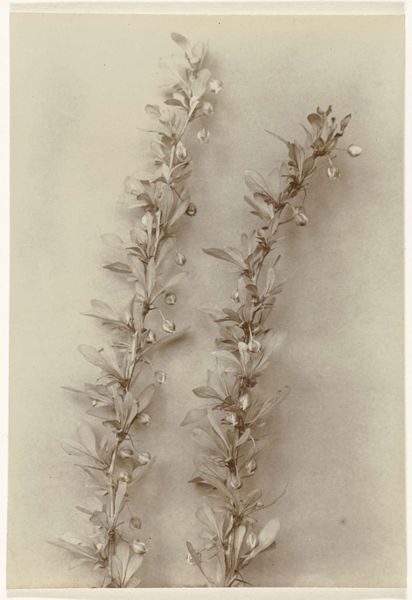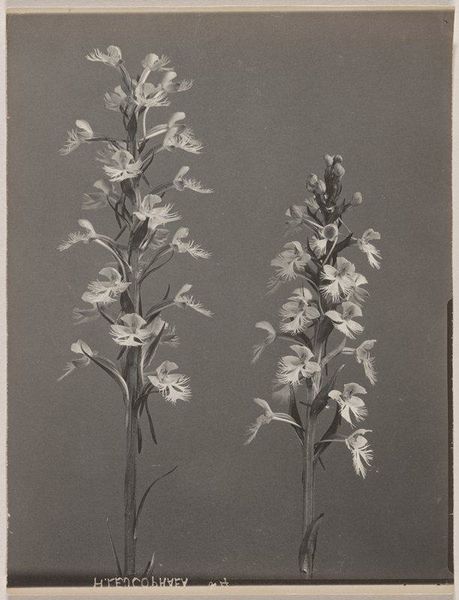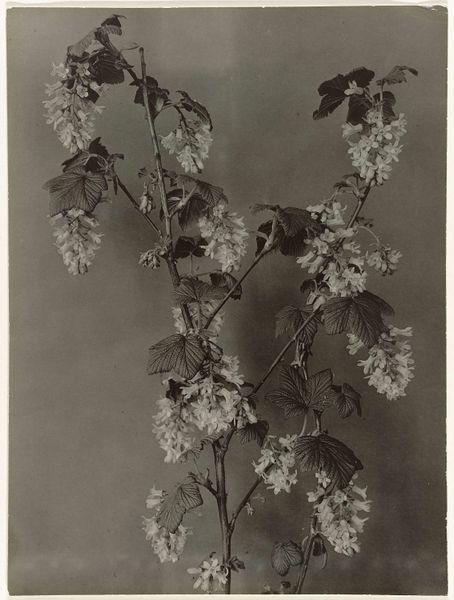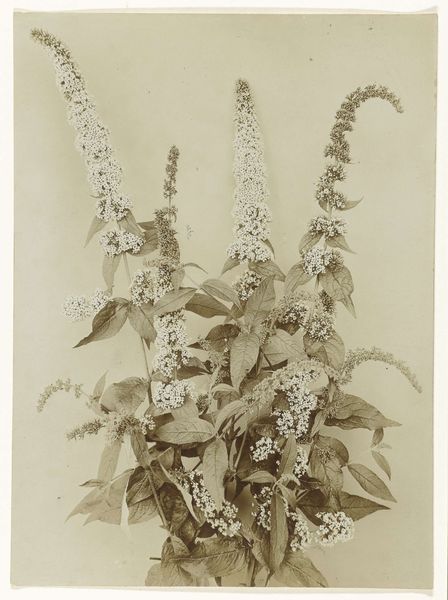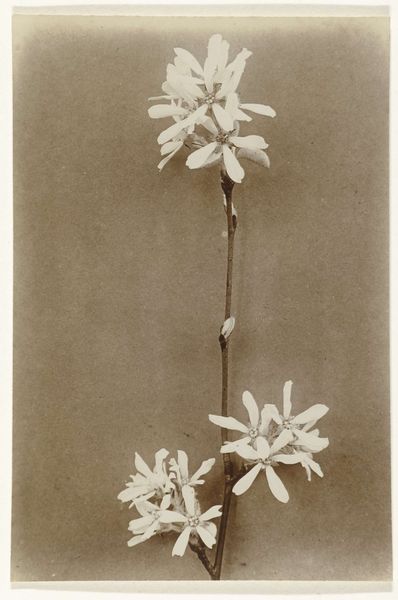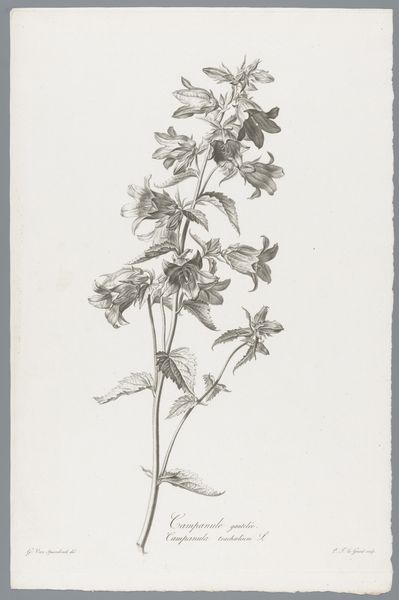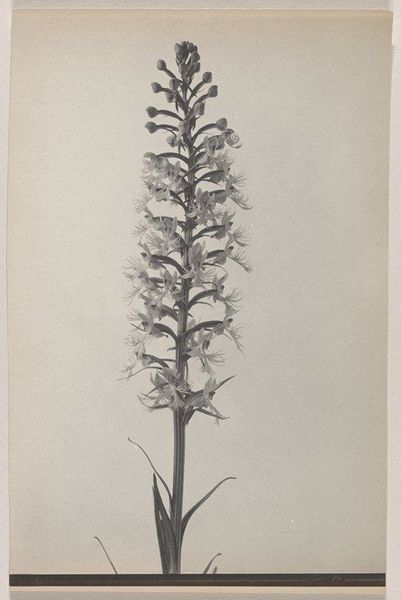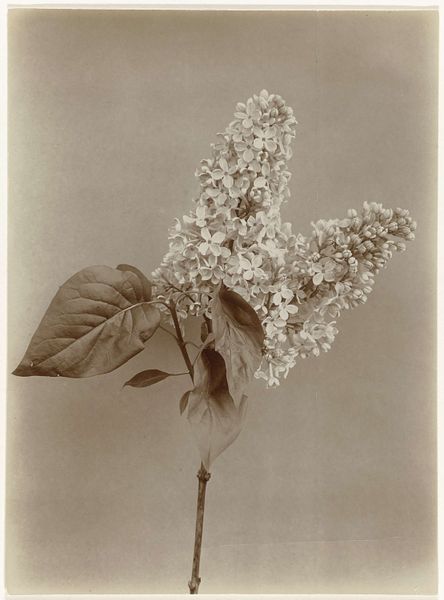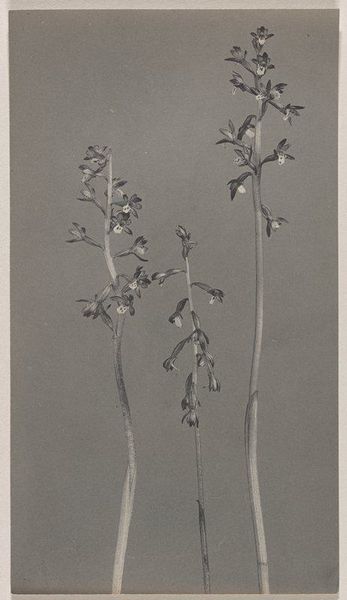
photography
#
photography
#
botanical art
Dimensions: height 167 mm, width 113 mm
Copyright: Rijks Museum: Open Domain
Curator: Richard Tepe’s "Branches of a Barberry Bush", captured sometime between 1900 and 1930, offers a stark botanical study rendered through photography. The print comes to us courtesy of the Rijksmuseum's collection. Editor: It has such an understated presence. The subdued palette gives it a dreamlike, almost melancholic feel. The composition emphasizes this verticality and delicate floral structure. Curator: Indeed, Tepe employs photography here not simply as a recording device, but as a means to explore formal qualities. Consider the tonality and careful distribution of light – how the differing textures contribute to its rhythm. It exemplifies semiotic representation—what does the upright presentation signal? Editor: Thinking materially, what’s fascinating to me is how photography, a fairly new technology at the time, could transform our relationship to the natural world. How many labor hours are required to gather, prep, shoot, and produce one photographic print? Suddenly, the familiar landscape is an object produced through the same intensive means of industry. Curator: The contrast highlights that period’s aesthetic preoccupation with capturing subjects that reflected modernity through technical capabilities of image production. A shift that altered how we appreciate and document forms and processes like botany through different lens-based operations. Editor: Precisely! And in that light, Tepe’s study transforms nature from a site of romantic contemplation into one of resource and commodified subject through his specific application of the medium. This opens dialogues surrounding resource consumption—are we observing nature, or appropriating its essence? Curator: An astute point. These nuances can only surface upon deeper probing through materials and methods, pushing us beyond surface appearances toward its deeper structural logic. I've always enjoyed considering his intentional choice to immortalize it in this way. Editor: Absolutely, it’s quite exciting to unveil layers beneath the deceptively simple image. Understanding how something like a flower came into being reshapes our understanding of representation and transformation through the industry’s mechanics of control.
Comments
No comments
Be the first to comment and join the conversation on the ultimate creative platform.
